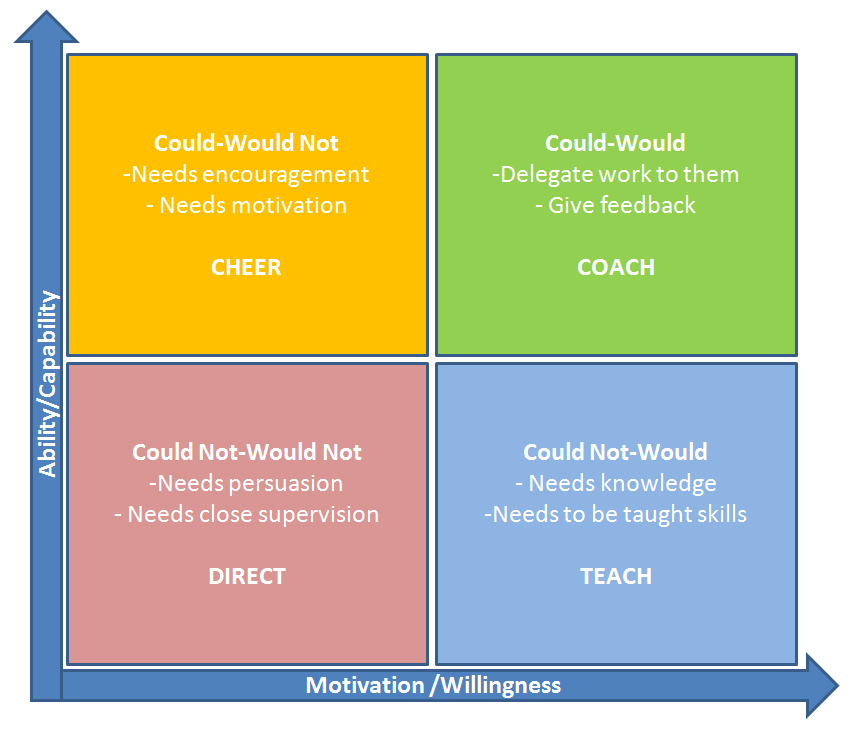You may be a team leader, a parent, a manager,or simply just someone who needs others to work or act in order to fulfill an objective. It may be in a form of project work at the school, a volunteer’s fund raising event, a church anniversary event, an IT project, or even as simple as weaning your parent into using the next generation smartphone. Do we apply the same technique on them to get results? No, the “one size fits all” approach will not work, if we do not assess their situation. Often times, it’s a matter of two considerations – Could they do it? and Would they do it? In a nutshell, the following diagram summarise the four possible scenarios:
In the COULD NOT/WOULD NOT scenario (in pink), you have a worker who is neither willing nor competent. As a manager, you will need to assess whether there is a better worker out there to replace him/her, or whether there is a larger issue which is preventing the worker from performing. If you have no other workers to replace him/her, it is best that you work on how to improve the performance of this weak contributor. Often times, there are deeper issues within the worker which will need significant time and effort to work on. In the mean time, you would have to closely supervise them and their tasks to ensure results. In this case, you play the director role.
In the COULD/WOULD NOT (in orange) scenario, you have a competent worker/party who is not willing. The root issue is the motivation level, which needs to be addressed. You could talk to the person to find out what’s preventing them from willing to take on a piece of work or instruction. Perhaps they finds the task boring, meaningless or the leader not earning their respect, or just plain laziness. Once the cause is known, work on it and increase their motivational level. Hence, such a worker requires encouragement and motivation. In this case, you play the cheerleader role.
In the COULD NOT/WOULD (in blue) scenario, you have a less competent party who is willing to take the task. The good news is that they are willing to do it, but just need a level of training and teaching in order to be able to do the task well. In this case, finding a good teacher or a course to bring the staff up to the knowledge and practice required would be the way to go. You can also share your own experience and best practice to help him/her adopt efficient and effective ways to accomplish what is required. In this case, you play the teacher’s role.
In the COULD/WOULD (in green) scenario, you have a winner here. There is an opportunity for you to delegate the work out to the work, who is both competent and willing to do the work. However, you should not just let him/her run wild. What it means is a feather touch management, where you observe and do quick updates on the situation, and give feedback along the way to perfect the work. In this case, you are coaching the worker how to perfect the task at hand. This also means helping them reflect and improve to a higher level, so that they continue to be motivated and skilled.





